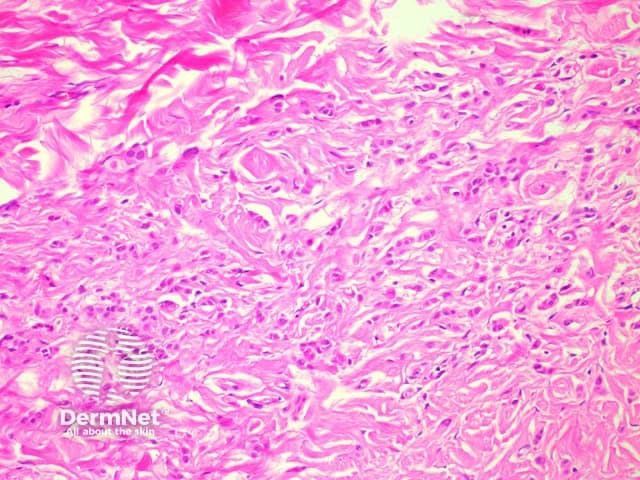Main menu
Common skin conditions

NEWS
Join DermNet PRO
Read more
Quick links
Angiomyofibroblastoma pathology — extra information
Angiomyofibroblastoma pathology
Author: Assoc Prof Patrick Emanuel, Dermatopathologist, Auckland, New Zealand, 2013.
Introduction Histology Special studies Differential diagnoses
Introduction
Angiomyofibroblastoma is a benign soft tissue tumour of the external genitalia.
Histology of angiomyofibroblastoma
Microscopic examination of angiomyofibroblastoma demonstrates a well-circumscribed tumour without a capsule and with variable cellularity. Hypocellular areas are collagenous (figure 1) or myxoid with some small-medium sized vessels. Hypercellular areas, located predominately around the vessels, contain characteristic plump round/oval shaped cells with relatively uniform nuclei without remarkable atypia (figure 2). Occasional multinucleated and binucleated cells may be seen.

Figure 1

Figure 2
Special studies for angiomyofibroblastoma
The angiomyofibroblastoma tumour cells are positive with immunohistochemistry for actin. Oestrogen and progesterone markers may also be positive.
Differential diagnosis of angiomyofibroblastoma pathology
Aggressive angiomyxoma – These are infiltrative tumours and usually much larger (more than 5 cm). Tumours have been described with mixed features of angiomyofibroblastoma and aggressive angiomyxoma, which raises the possibility that these tumours are related.
References
- Pathology of the Skin (Fourth edition, 2012). McKee PH, J. Calonje JE, Granter SR
